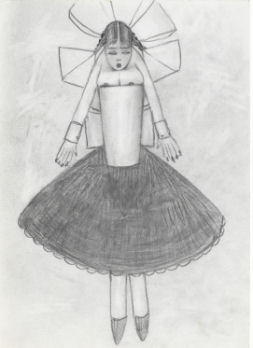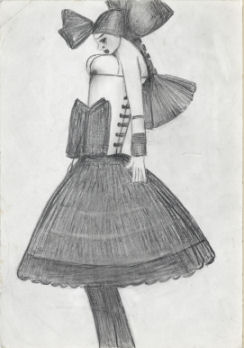Lowry sketches reveal a new side to artist
Think of LS Lowry and you’ll probably think of grimy urban scenes in the North of England featuring mills populated by his signature matchstick men and women. But now it might be time to think again.
- Chapters
- descriptions off, selected
- subtitles off, selected
- captions settings, opens captions settings dialog
- captions off, selected
This is a modal window.
This is a modal window. This modal can be closed by pressing the Escape key or activating the close button.

As part of the exhibition Invitation to the Ballet, produced in conjunction with the Royal Ballet and opening at The Lowry in Salford next week, a series of drawings is being shown in public for the first time which will radically alter our understanding of the iconic working class artist.
His interest in the theatre is already well-documented but it turns out that he was also a huge fan of the ballet, making frequent trips to Covent Garden and travelling all around the country to catch various ballet companies on tour.
Even more surprising perhaps is the revelation that Lowry’s interest in the ballet inspired him to complete a series of three heavily worked drawings of ballerinas in strikingly eroticised poses.
The drawings provoke an instant response of shock, mainly because they’re semi-nude and Lowry isn’t a public figure we associate with being at all in touch with his own sexuality.
But the sexuality represented is one which is very much repressed and here we’re on more familiar territory when it comes to interpretations of Lowry’s biography. In the same way as you never see figures hugging in any of his paintings, the newly exhibited drawings are cold and devoid of emotion, invested instead with a heavy sadness.
Image gallery
See more of LS Lowry's artwork, both old and new, on our image gallery. All images courtesy of The Lowry.
LS Lowry gallery - old and new

They portray women trussed up and constrained by their heavy costumes, struggling to burst out from the constraints imposed on them by their chosen public roles. This being the case, they can only confirm our understanding of Lowry as a man unable to reconcile his sexual needs and desires with the demands of a life which began at the end of the 19th century and then developed within the social context of the Edwardian era.
Another shock when confronted with the images is how different they are to the rest of Lowry’s work. But again, after more in-depth consideration, the conclusion that emerges is one which doesn’t contradict what we already understood about his more familiar paintings and drawings.
Far from it.
If his urban landscapes and crowds of matchstick men and women can be read as expressions of his view of human beings being reduced to automata by the social context in which they live and work, mere dolls or puppets controlled by an absent and uncaring puppeteer, then these newly exhibited drawings can only confirm this reading.
Not only are the dancers constrained by their brutalising and unwieldy costumes but the costumes themselves are believed to have been based on those featured in Lowry’s favourite ballet of all – Coppelia. When we consider that the plot of this ballet tells the story of the inventor Doctor Coppelius and his life-size dancing doll then again, we’re on more familiar territory.

Perhaps then, what’s most shocking of all about the drawings is the extent to which they invite us to radically reconsider our understanding of Lowry as a fundamentally working class artist. This is a man who was very much marketed as a primitive painter, and someone who was happy to collude in the construction of this public image in order to achieve success.
But the truth is that he was the son of a gifted classical pianist and was not only familiar with the history of art but drew on cultural influences as diverse as music hall, opera, theatre, classical music – and, we now understand, ballet.
Contrary to the public image of a man who never left Salford, he was a well-travelled and sophisticated artist who visited London regularly as well as making regular trips to see fellow artist friends all over the country.
Yet in our desire for simple hooks that allow us to quickly compartmentalise public figures, we continue to think of him as some kind of two dimensional, cartoon character of a Northern artist, dressed in a flat cap and smoking a pipe.
As these newly exhibited drawings reveal, the truth is far much more complicated. And ultimately, far much more rewarding.